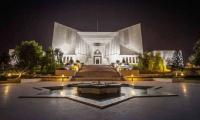The writer is an independent education researcher and consultant. She has a PhD in Education from Michigan State University.
Over the course of my work, I have the opportunity to visit and work with public schools on the lowest end of the spectrum, and it always leaves me shaken.
Since I cannot share those images here, let me paint you a word picture: Calling them schools is beyond charitable. Many consist of a single classroom bounded by a two feet high brick boundary, a tarp strung onto supporting beams for a makeshift roof and walls, and 50 students sitting on the bare ground, with no furniture, no electricity, no lights, no water, no bathrooms and no doors. It is a sight resembling a refugee camp.
Other schools once had buildings but have fallen in such a bad state of disrepair that they now resemble ancient ruins, with collapsed walls and roofs and missing doors and windows. These are not outlier cases – there are thousands of schools that fit this description damaged by one cause or another over the last few decades.
Clearly, these schools suffer in every way and require help in every aspect, but their most basic problems are related to infrastructure. We cannot expect children to come to school and spend five hours without access to bathrooms, running water and soap. This is of greater concern in girls’ schools because for some parents this is enough reason to pull their daughters out of school, thus prematurely terminating their education. Some schools operate in the open air, with children sitting on the ground and a teacher equipped with just a blackboard. The lack of a school boundary wall exposes children to passers-by (a major concern for girls’ parents, especially in conservative areas) and, sooner or later, again leads parents to take their children out of school.
Going by all the education related news coming out of the federal government, its priorities are centered on introducing the new SNC, the Single National Curriculum, introducing a unified school system and eliminating competing examination systems (IGCSE, O/A-levels, IB), changing the medium of instruction and adding even more religious education to schools (maybe because someone thinks it worked out well since Zia did so in the 80s).
The Pareto principle, named for 19th century Italian economist Vilfredo Pareto, states that roughly 80 percent of effects are explained by only 20 percent of causes, which is why it is also called the 80/20 principle. The remaining effects (20 percent) are explained by the large collection of other possible causes (80 percent), which requires considerably more nuance and effort to address.
Since then, this idea that a few causes can explain the majority of outcomes has found application in medicine, economics, computer science, etc. You may know its more colloquial version: “Solving 90 percent of a problem only takes 10 percent of effort, but solving the last 10 percent takes 90 percent of the effort.”
I am all for improving the quality of public education, a difficult challenge that is hard to quantify, but not at the cost of ignoring the majority of schools that lack basic infrastructure, which is much easier to address and has a bigger payoff in terms of enrollment as well as quality as some experimental work from developing contexts shows.
When resources allocated to the education sector are scarce, as they always are, deploying them to maximum positive effect takes on even more importance. On the bell curve capturing levels of learning and literacy in schoolchildren, those falling on the far-left side, representing low levels of achievement because they are going to non-existent schools, will derive little benefit from a new curriculum, a new school system or more religious content. Their problems are more basic, which (fortunately!) have simple solutions.
As a first step, children going to damaged or destroyed schools need school buildings, with access to clean water and toilets to allow them to spend hours at school, electricity to run fans to allow them to bear the heat and classroom furniture to sit on. Secondary and higher secondary schools in particular need basic science labs, computer labs and libraries. Providing these essential facilities in schools is low-hanging fruit and is an easy way to raise enrollment rates for boys and girls.
Unfortunately, many (not all) high-profile education projects pursued by governments are best described as shiny objects designed for positive media coverage, which cater to students already falling on the far-right side of the bell curve, representing high achievers.
A recent example is the Daanish school program in Punjab. According to public information, each of the 14 schools (7 for boys and girls, each) takes in 110 students annually, only 1,540 students across all Daanish schools. While it is wonderful to see the state spend on education, is the amount spent per student the best use of limited funds? I wish we could keep all public schools as well stocked with material and human resources like Daanish schools, but our education budgets are unlikely to allow that for decades to come.
What comes to your mind when you imagine a public school depends largely on where you live? In Islamabad you may think of the city’s model schools and colleges for boys and girls – the ICG / ICB, the IMCGs / IMCBs. They are reasonably well equipped. Most students (grades 1 to post-grad levels) in the 424 model schools and colleges overseen by the Federal Directorate of Education have access to toilets (84 percent), clean drinking water (79 percent), computer labs (83 percent), science labs (58 percent, excluding primary schools), while many have access to a library (40 percent) and are staffed with teachers that hold at least local MA or MSc degrees.
Schools and colleges of similar stature can be found in the handful of major cities of the country and their alumni tend to do very well and can be found working in all the same coveted organizations as graduates of ‘elite’ private schools. Some may have sailed through by resorting to rote learning, but for a large part, after going through the same local universities, they are often as capable, successful and well-spoken as their private school counterparts and are hard to tell apart in workplaces.
Let me rephrase my above question: Would we not be better off using funds spent on vanity projects (like the Daanish schools) on bringing low and middle-tier schools at par with institutions such as Islamabad’s model schools and colleges?
These simply equipped, no-frills public schools and colleges have consistently proven themselves to be reasonably well-functioning institutions, staffed with teachers with qualifications available in abundance. They lack some of the more extravagant facilities of boarding schools, cadet colleges, and elite private schools, but they are a demonstration of how much better public schools can do – capable of delivering education good enough to enable upward social mobility on a shoestring tuition fees and reasonable per student budgets.
Imagine how much we could improve our literacy KPIs if we could just run all our public schools, in big and small cities, villages and remote areas, like those model schools and colleges. Given how far behind many public schools are, just equipping them with basic yet spartan facilities is a 20 percent-effort problem that may take years but has a big payoff and makes for a realistic, worthy and achievable goal.
Email: arazzaque@gmail.com
On December 21, Trump unleashed fresh salvo, lambasting Panama for its "unfair" canal fees
According to Unicef, estimated 22.8 million children aged 5 to 16 are out of school in Pakistan
Famous Urdu slogan carrying incumbent PM’s name is ‘Shehbaz Karey Parwaz’, which means Shehbaz is high flier
Gender disparities are pronounced in KP, where girls account for 64% of OOSC
Chinese philosopher Mencius prophesized 3000 years ago that state that does not employ worthy perishes
Over past two decades, rapid and often chaotic development has increasingly defined Islamabad's landscape







